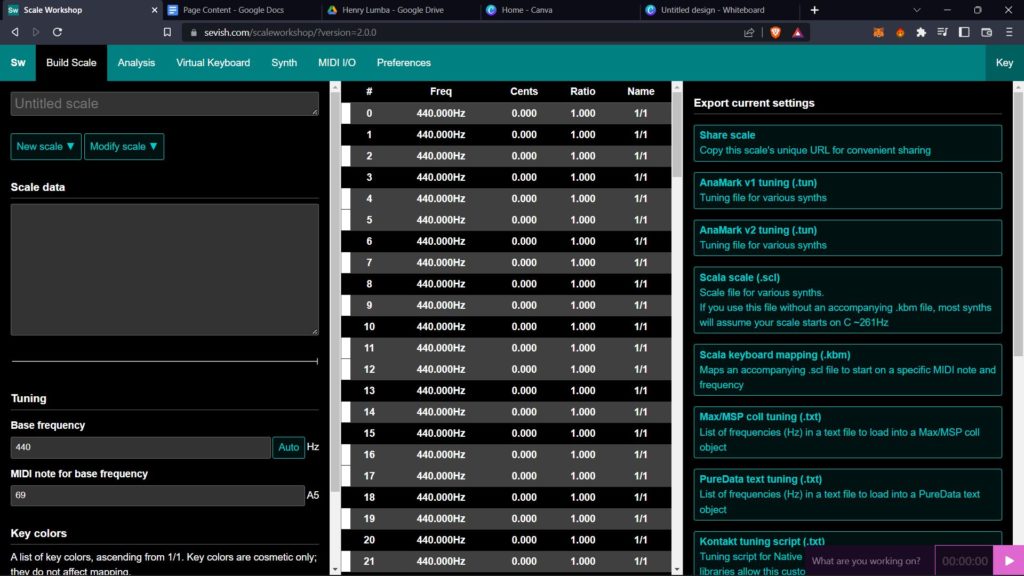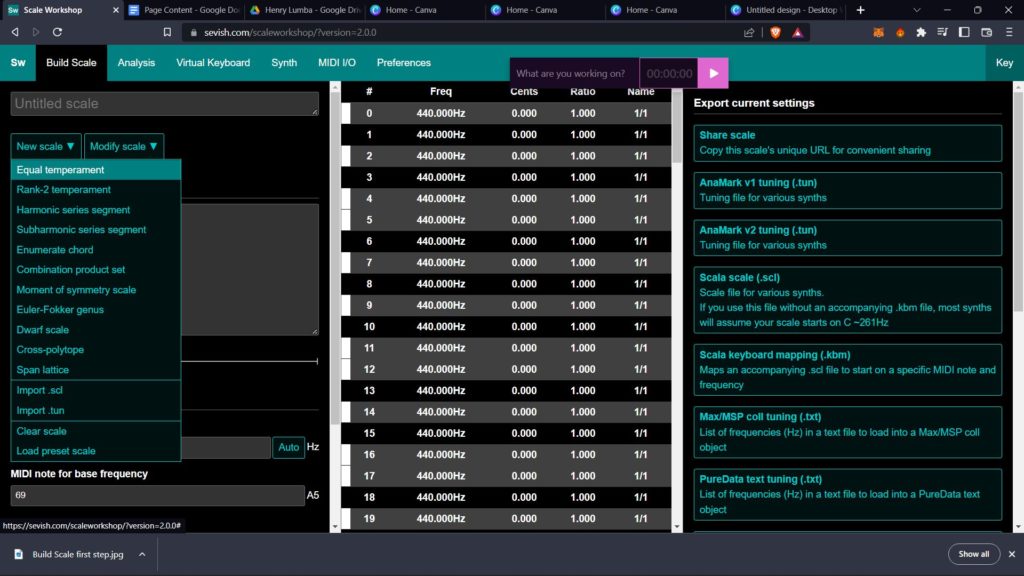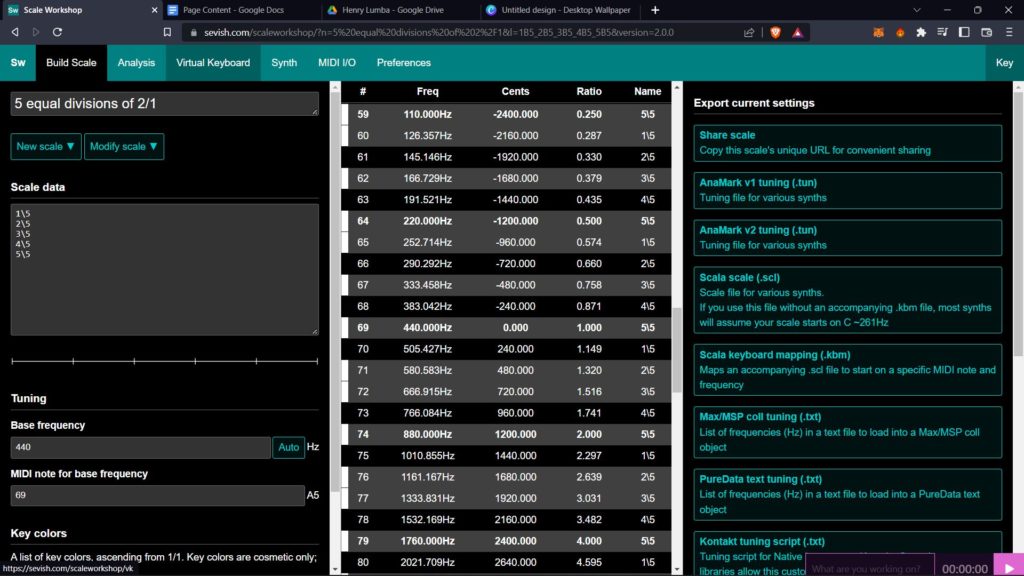WHAT IF?
ARTIST: Henry Lumba
How do you to express your uniqueness with your own language of sound?
What If? is a research project for microtuning around Indonesia. I do, learn, research, and make.
So, What is MicroTuning?
The microtone is an interval that differs from chromatic semitone. Almost all music that we listen to right now is based on Western tuning intervals. What we hear in mainstream music on Billboard Charts or Spotify Top tracks are in the 12-tone equal-temperament, mostly known as the Chromatic scale. In this research, I use Sevish Music’s Scale Workshop (a web-based microtuning application for making your own microtonal music), along with Arturia Pigments to make a sequence inspired by Stranger Things. Using this sequence as an example, I have modeled microtuning from the Chromatic scale, the Pelog Scale, the Slendro Scale, and the Sasando Gong Scale.
The Chromatic Scale, the Western standard, is a musical scale with twelve pitches, each a semitone, also known as a half-step (think sharps and flats), above or below its adjacent pitches.
The Pelog Scale and the Slendro Scale are some of the essential tunings for gamelan instruments in Java and Bali. The difference is that Pelog uses seven notes in their scale, whereas Slendro uses five notes. The Sasando Gong Scale is used mainly for the Sasando instrument from East Nusa Tenggara, where I am from.
I invite you to also create your own microtonal music.
Here are some tips to make your own scale using the Sevish Scale Workshop. Add it to your browser’s plugin and make the best of it!
1. First of all, we must know which VST (virtual studio technology) is compatible with microtuning. You can use this link to check this.
2. Then we can produce our microtuning via Microtunal Workshop.
3. Click “Build Scale”

4. Choose “base scale” then choose “equal temperament” (Why? Because to start microtuning, you must first learn the tuning most similar to the chromatic scale.)

5. Now, there are some options:
- Number of Divisions > The Divisions of Octave
- Relative Steps > Pitch of the key
- Absolute Degrees > Formal Octave
- Interval To Divide > Interval between Note
6. The default number is good for experimenting but you can put any number that you want.
7. YAHOOOOOO! You produced your first microtune! How do you use it? Try the virtual keyboard on the menu and you can continue modifying it to your liking.

8. You can save your scale and use it for your favourite plugins, like Arturia Pigments or U-he Diva.
Below you can hear the comparisons between different microtunings of the sequence I made using Arturia Pigments. The melody sequence is inspired by the Stranger Things iconic intro music by the band SURVIVE. Arturia Pigments is an easy-to-use VST for sound design, and you can use your design to produce micro tunings and compare microtonal differences.
There are many scales in the world: Hirajoshi from Japan; Raga Kafi and Raga Yogi from India; Mbira from Zimbabwe; and many more all around the world. I chose my homeland, Indonesia, which has a lot of different instruments and is rich in historical music culture. I begin with the Chromatic Scale as parameter scale, and compare it to the Slendro Scale and Pelog Scale which are mainly used with Gamelan Instruments from Java Island. Then, hear the difference again with the Sasando Gong scale which is mainly used with the Sasando from East Nusa Tenggara
As an example, this is what I created. I made a scale based on this video from my homeland.
You can use microtuning to enhance your track to make it feel unique.
Here are my results: